
How to promote your company’s HR brand: 6 effective tools
While you may not see the value in promoting your HR brand or actively engage in it, large companies are investing thousands of dollars into this. The reason is simple — 75% of employees research the employer brand before applying (according to LinkedIn research). The company's task is to show that it is the best place to work in its field and deserves only the most talented employees. And to achieve that effect, just having a "About Us" section on the website is not enough.
We discussed 6 popular and effective tools for promoting an HR brand. We explained how to use them, what their pros and cons are, so that after reading the article, you could start implementing some of them.
1. Profiles and company profiles on job search websites, career portals
The essence of this HR brand promotion format is to gather all the information important to potential candidates about the company in one place and focus on several aspects: the organization's successes, its projects, areas of activity, values, size, and number of employees. It is also important to include data about the team, photos of the office and potential colleagues, and to tell about the leader.
This allows you to immediately assess the scale of the enterprise and what it is involved in, and to understand whether such a place is suitable for a person who is looking for work there or not.
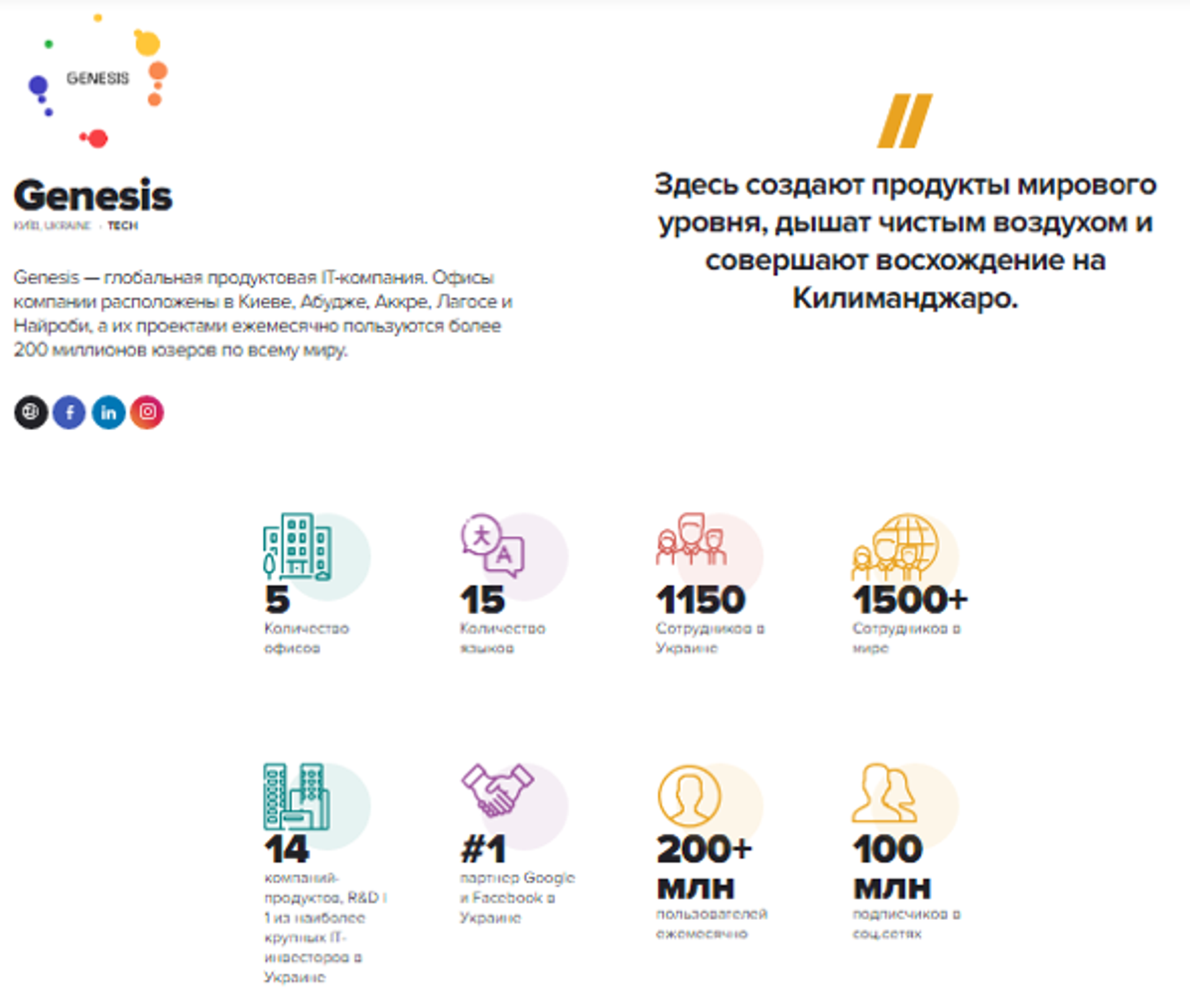
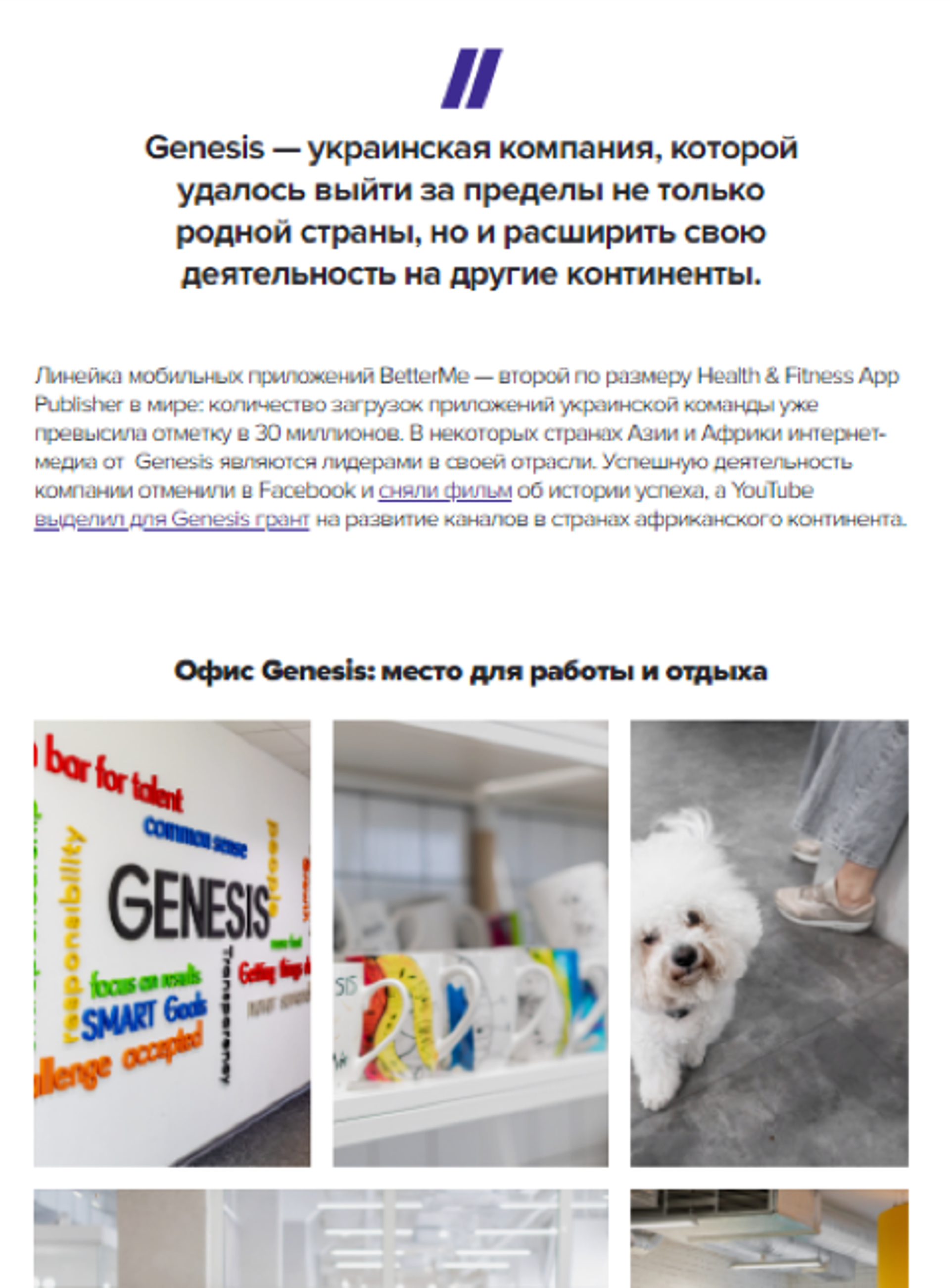
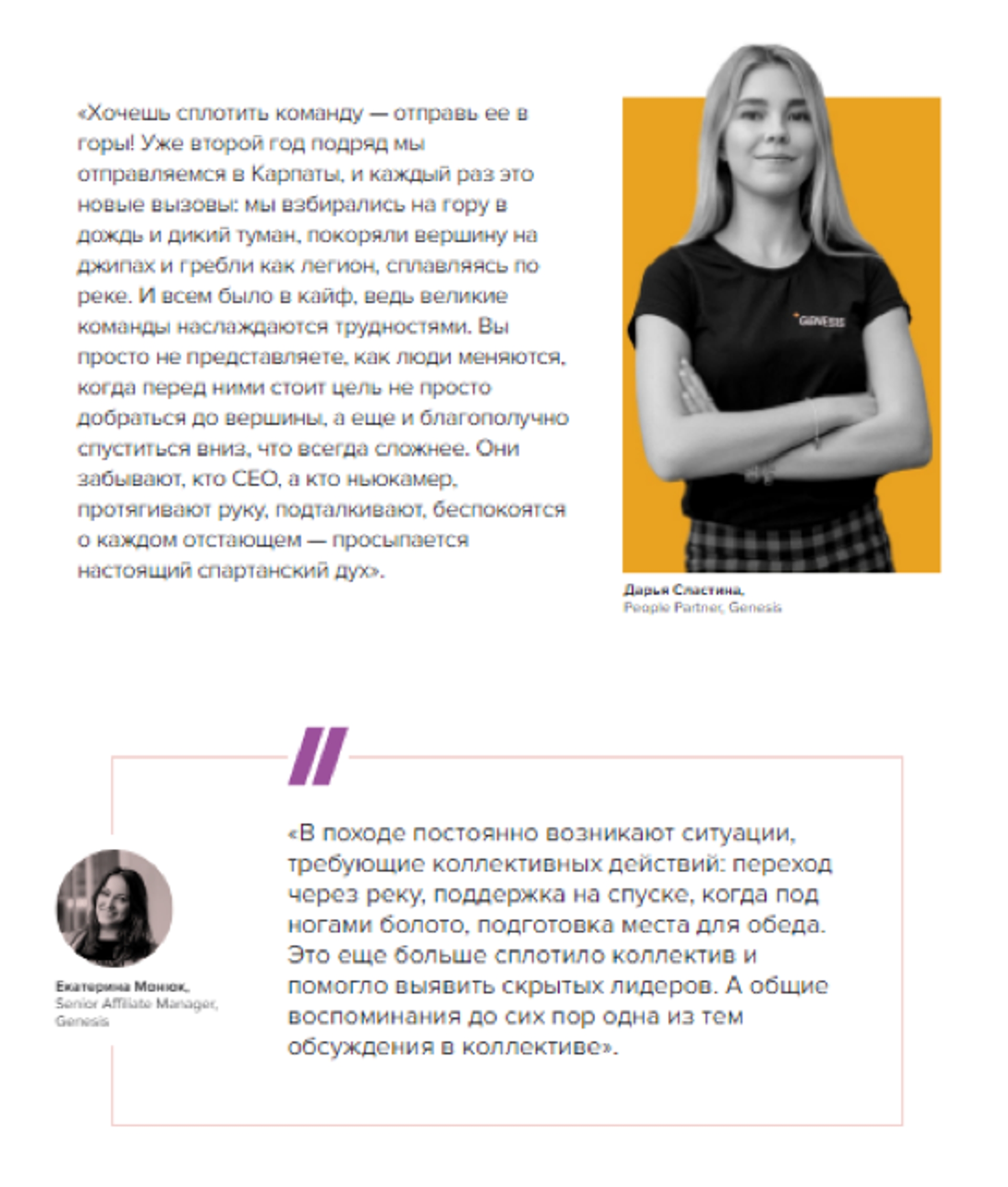
Pros:
- this format is inexpensive to implement;
- looks vibrant, attracts attention, and you can place (and even pin) a link to the profile on your own website or social media page;
- presents the company as one that truly cares about how candidates perceive it (and for potential business partners, this is a signal that even with such a seemingly simple aspect of development, the organization treats it very seriously and responsibly, meaning it will behave similarly in collaboration);
- allows for covering a large amount of information about the company in one format — corporate culture, office, employees, company values, future plans, nuances of joining the team, etc.
Disadvantages:
- development can take from 1 to 2 months (if organizing a photoshoot of the team and office, shooting videos, conducting interviews with several employees);
- the information will need to be updated every 4-6 months (of course, if the company is growing and evolving quickly), which means additional expenses.
2. Promotional publications in media where the target audience of candidates is present
Media publications are one of the effective ways to build an HR brand. This works well if your target audience of candidates is present in the media, ideally when the media focuses on a specific topic or niche. It is also a successful format for promoting your HR brand if you do not yet have a content department or a staff copywriter to convey your values, ideas, vision, and strengths through text, as media often offer assistance from a journalist on their side. It is best to tell the story of the organization through interviews with employees, expert columns from top managers or individual workers, and columns about the company's values.
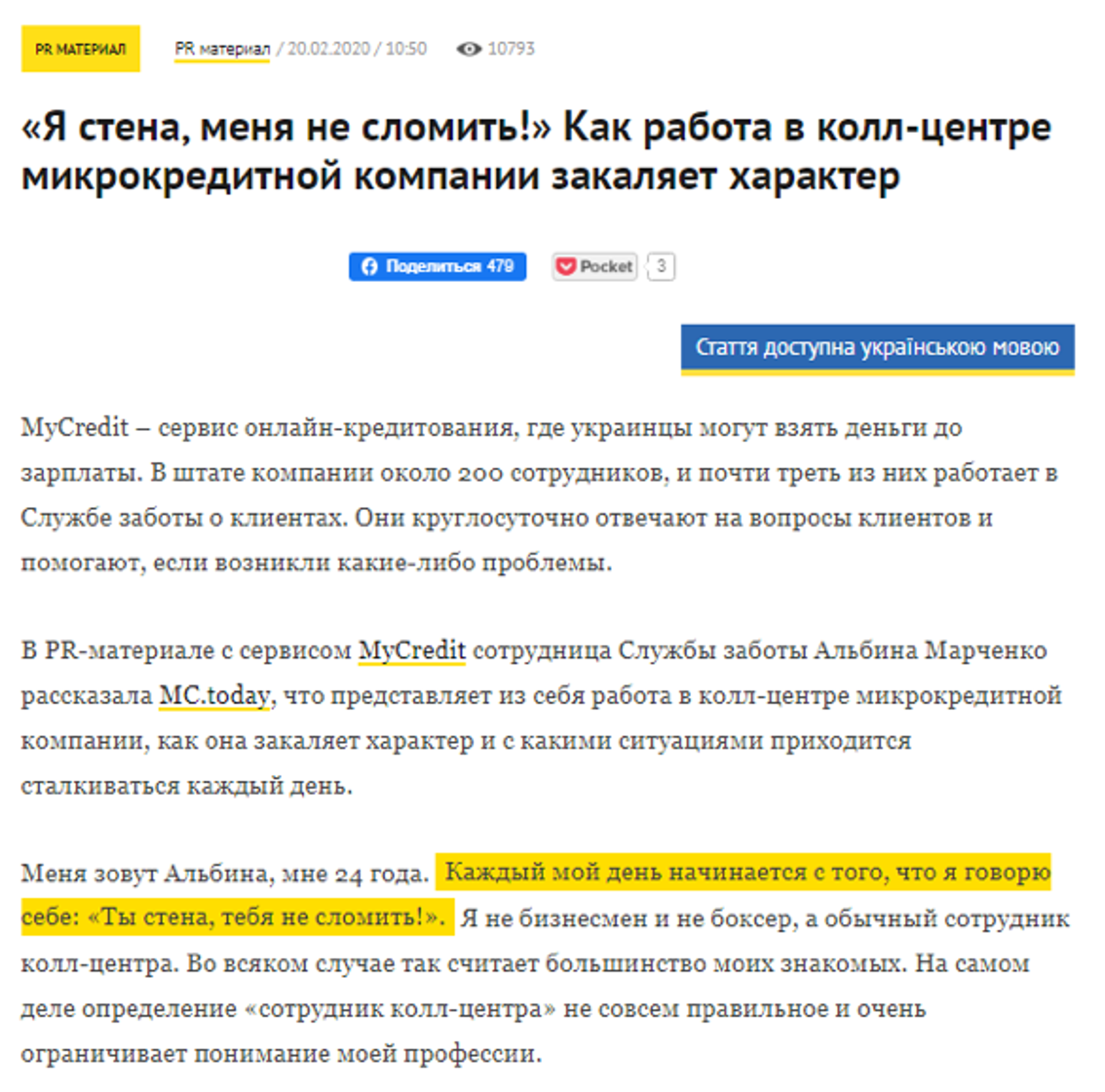
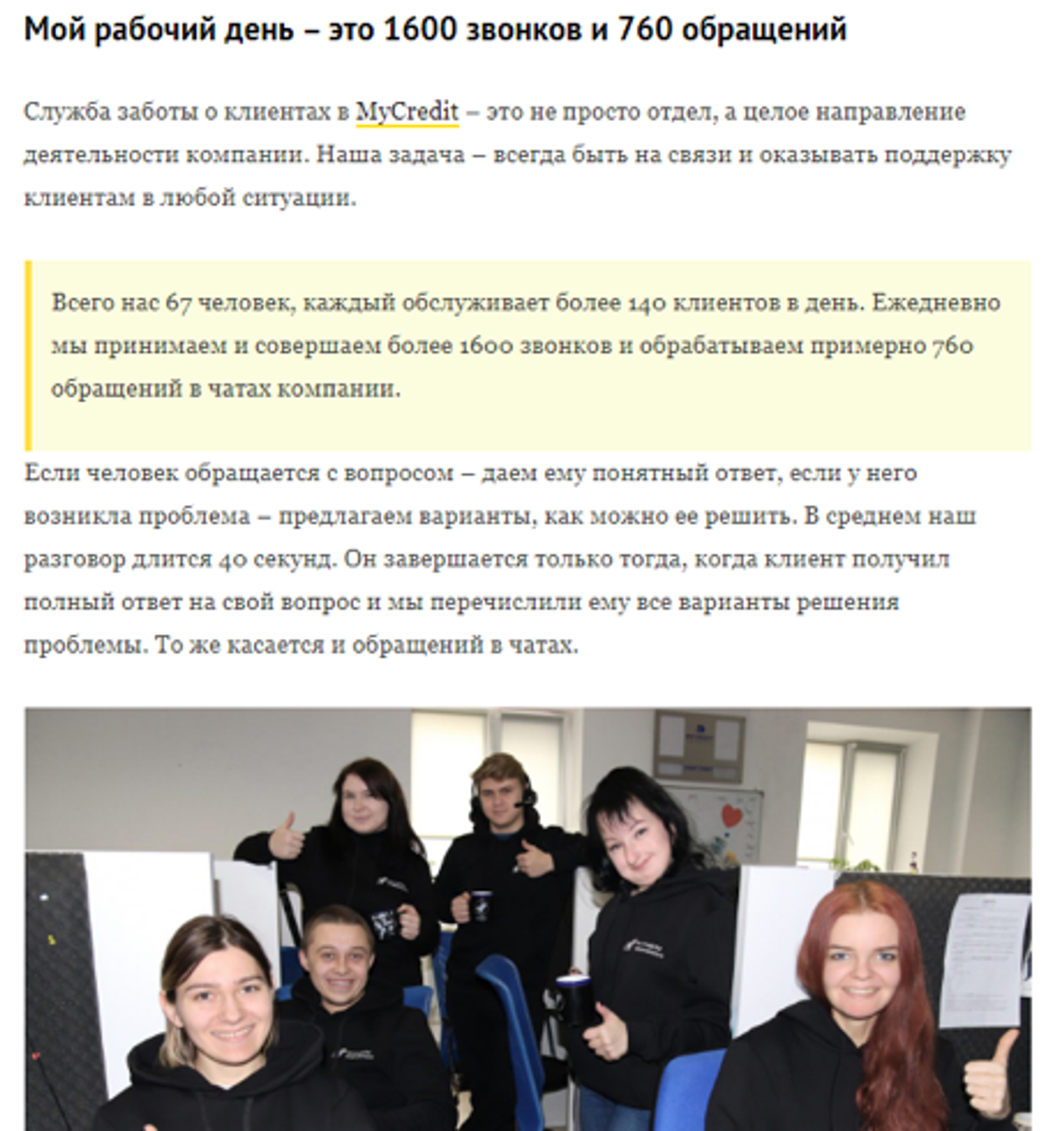
Pros:
- If you successfully choose a list of media outlets, you can attract interested and higher-quality candidates;
- Through case studies and success stories, people better remember the names of companies;
- Since the media can offer the help of their journalist, you don't necessarily need to have a copywriter or content manager on your team to write texts;
- Through employee stories, it’s easier to convey the real values of the company;
- This can overall increase the brand recognition of the organization.
Disadvantages:
- it is important to choose the right words and meanings in articles; otherwise, you may attract the wrong specialists (for example, they might come to you not for work, but for the perks);
- if you choose the media poorly, you can waste the budget and not even increase brand awareness;
- posts may receive both positive and negative comments that need to be addressed quickly and competently without harming the company's reputation.
3. A separate social media page created specifically for promoting the HR brand
The essence of this format is to maximally showcase the corporate culture of the company, its current employees, the atmosphere within the team, the process of working on projects or products (depending on the type of activity), through various interactive tools.
How to effectively build an HR brand on social media? It is important to utilize all available types of content and create separate categories for each. For example, create entertaining content about office life and the team in stories, while sharing success stories of individual employees or information about the selection process for the team in posts.
Don’t forget to come up with a special hashtag that employees can add to their own pages, unconsciously promoting the company’s HR brand.
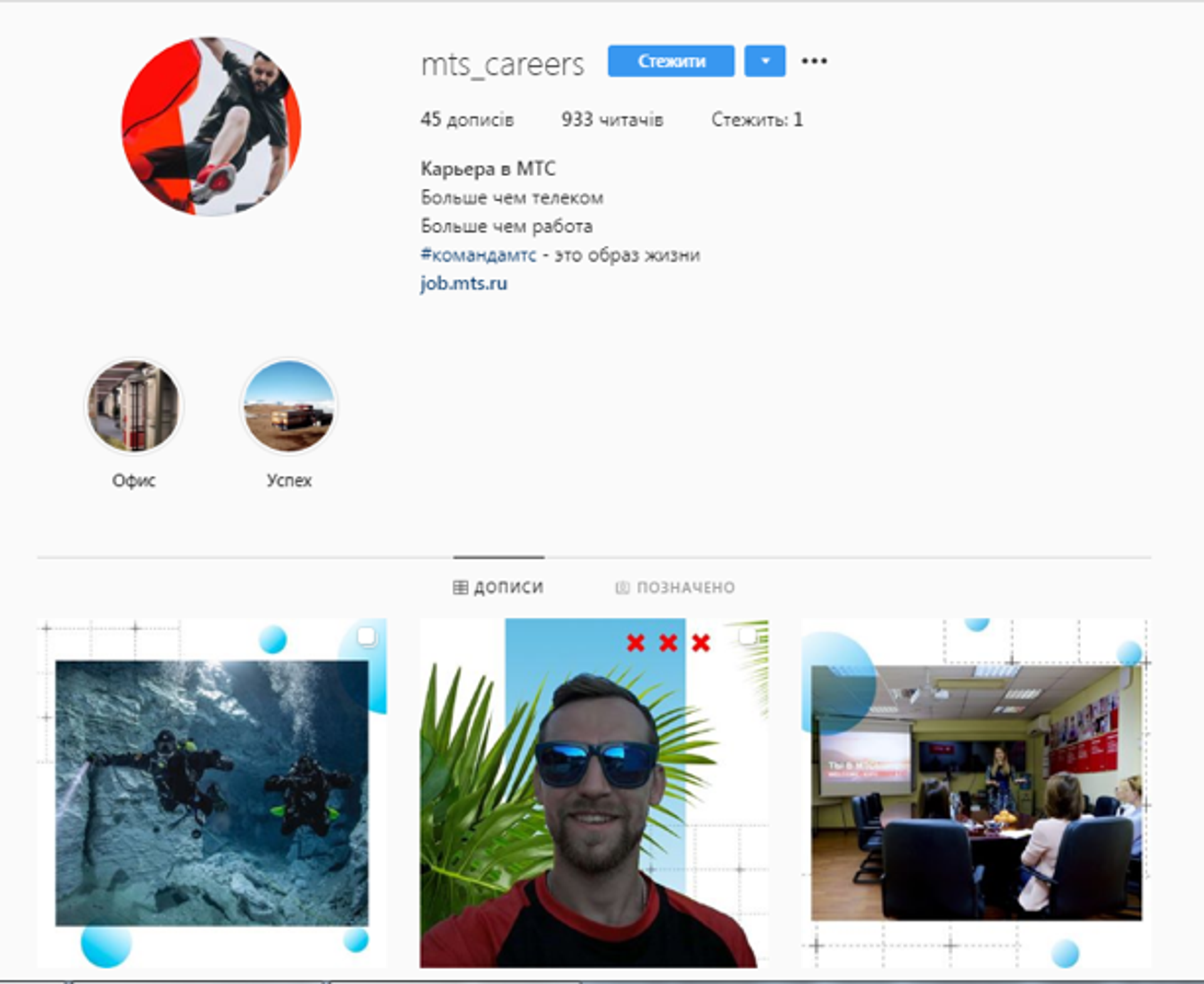

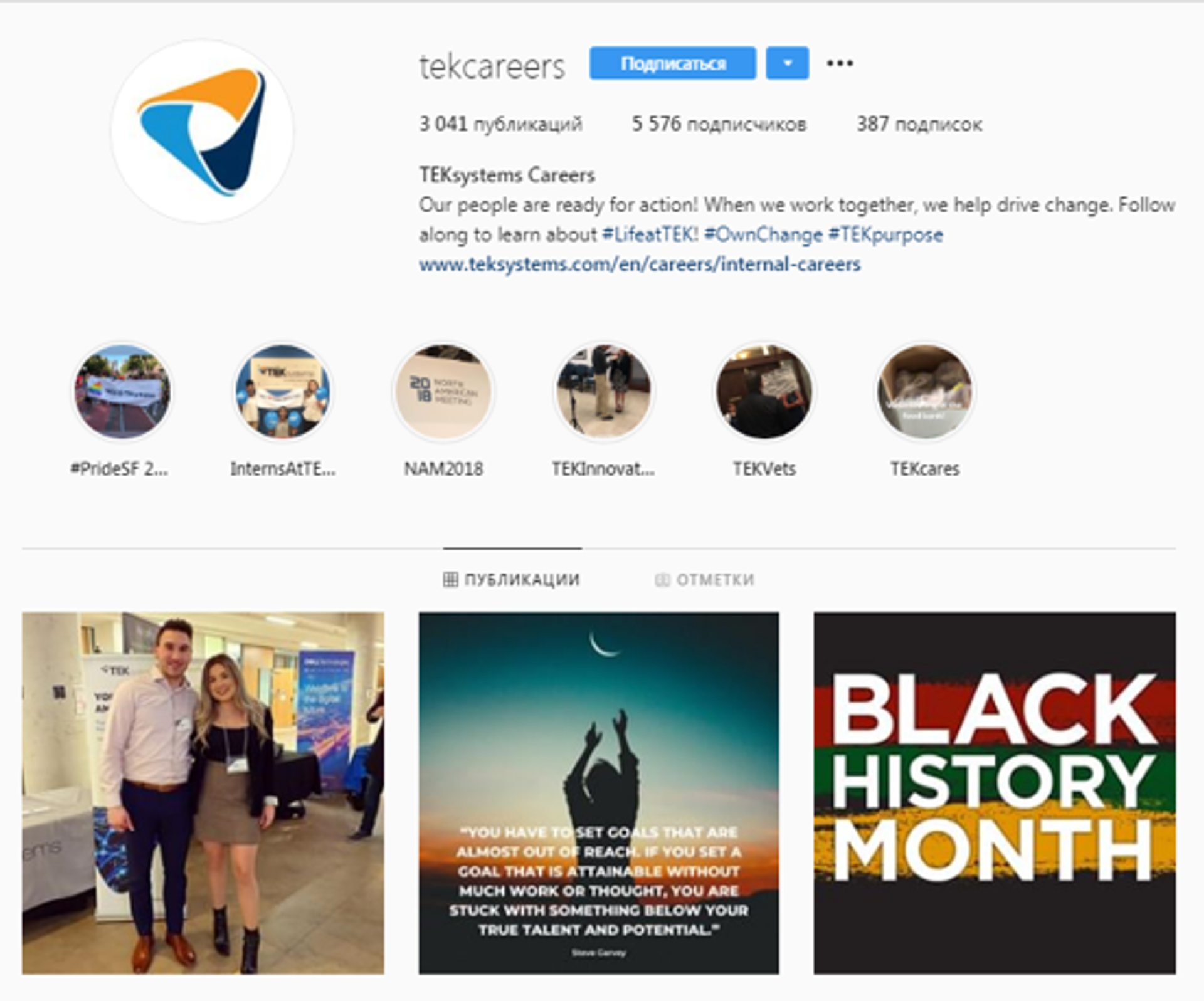
Pros:
- Fast promotion on social networks is possible with a budget and the ability to set up targeting;
- This way, you can grow your HR brand ambassadors and later promote through their accounts without advertising expenses;
- Attracting young people aged 18-30 and collecting applications for vacancies directly from social media (for example, through a chatbot in messengers, Google Forms, email);
- The ability to attract quality candidates with already high loyalty and select the best among them.
Cons:
- doesn't work very well if the whole team is remote, as it is harder to convey team spirit and the nuances of corporate culture (but if you have a very fun and creative team, you can come up with original content formats, and then this downside will disappear);
- if there's no budget, you'll likely be promoting the HR page for a long time;
- it is necessary to constantly fill the page with quality content (posts at least 2 times a week, and stories, videos if possible) and it's better if one person is responsible for managing this page (all employees can participate in content development) — a copywriter, SMM specialist under the guidance or in collaboration with an HR manager, otherwise the page will quickly be forgotten and there will be no sense in maintaining it;
- there's a risk of becoming the subject of a scandal due to inability to handle negativity or poor monitoring of comments, mentions, and posts about the company outside the page.
4. HR landing page
This is not a section on the company's website, but a separate one-page site, though the link to it may be on the resource instead of a section with job openings, team descriptions, etc. Its main task is to encourage a person to take a targeted action. This can be anything: to subscribe to a newsletter with current job openings or news about the team's life, to apply for a job, to submit an application without linking to any specific vacancy, etc. The structure of the page should be such that it addresses all possible questions from the candidate about employment and working at the company, removes doubts, and provides an understanding of whether you align with each other on values, mission, vision.
Pros:
- freedom in the structure of such a channel, so you can experiment and try different block placements or different types of content through A/B testing;
- you can integrate applications from the HR job landing page into the HRM system PeopleForce;
- it's possible to create such a page to promote the HR brand in just a couple of days without a programmer using a website builder;
- it's convenient to redirect candidates who want to apply from social media pages by simply sending them a link to the one-page site.
Cons:
- In order for the landing page to work, you need to pay for hosting, and sometimes for a domain, which adds extra expenses (up to 150-200 dollars per year);
- You need to constantly monitor the information on the page and update it at least once a week (adding content, removing already closed job listings).
5. Speeches at events
The synthesis of two types of presentations is important here — on any topics related to the company's products or some internal, technical processes (any employee with sufficient experience can be the speaker), and on team management, personnel, and corporate culture (it's better if this is told by an HR manager or another employee from the HR department, a top manager, or the founder). Both types should be expert-level, with cases from the organization; otherwise, the desired effect will not be achieved and promoting the HR brand will not be possible. Speakers can participate in partner events as well as organize their own.
Pros:
- If you share case studies on improving the personnel management system at events, you might win an HR award (if the organizers practice this), which will further strengthen the HR brand;
- This is a great opportunity to attract employees if one of the company's values is continuous development and self-education (after all, this is exactly the goal for which a person attends educational events);
- This demonstrates the team's expertise and immediately allows a potential candidate to assess the level of tasks and issues in the company;
- Since speakers are often photographed at events, this provides additional content for all your channels for building the HR brand.
Disadvantages:
- If preparations for presentations are not done properly, it can negatively affect the perception of the employees' expertise in the company and deter job seekers.
6. Section about the company's life in the corporate blog
How to promote your HR brand using a section on the website and why it is needed if, for example, there is already an HR landing page? If you plan to use both of these tools, you need to separate the content between them. For example, in the section, publish information about team news, photos from corporate events, employee speeches, expert content from colleagues, while using the landing page solely for collecting responses to job openings and describing the values of the company as a whole.
But today, it is more common for the "Vacancies" section to replace the HR landing page, as this is still not a developed tool in the CIS.
Pros:
- the candidate can immediately assess the corporate life of the company and get to know some employees remotely;
- realistically evaluate the team's growth dynamics, provided that the content in the section is regularly updated;
- here you can "warm up" the candidate and motivate them to visit the landing page and encourage them to apply — and all of this is free.
Disadvantages:
- the information can be too dry, uninteresting, if the other content on the site is restrained, which may scare off candidates;
- if the data is not updated regularly, such a section will be useless.
We recommend regularly developing at least a few tools for promoting the HR brand, and after 3-6 months of use, evaluate the effectiveness of each and consider adding new tools.
Get started with PeopleForce today
Automate your HR routine to create a high performance culture in your company. PeopleForce is your best HRM alternative to stay business driven but people focused.

Recent articles
How automation is shaping the future of HR
The ongoing global health crisis has transformed the way people work. The pandemic not only caused the massive shift to remote working.
3 ways small & medium-sized business can better optimize recruiting
Perhaps it’s not too surprising that hiring and retaining the right people is one of the biggest challenges facing small and medium-sized businesses.
How much time HR platform saves for HRs and admins
Discover how modern, all-in-one HR software simplifies complex processes, ensures compliance, and boosts efficiency to help HR teams manage growing responsibilities with ease.

